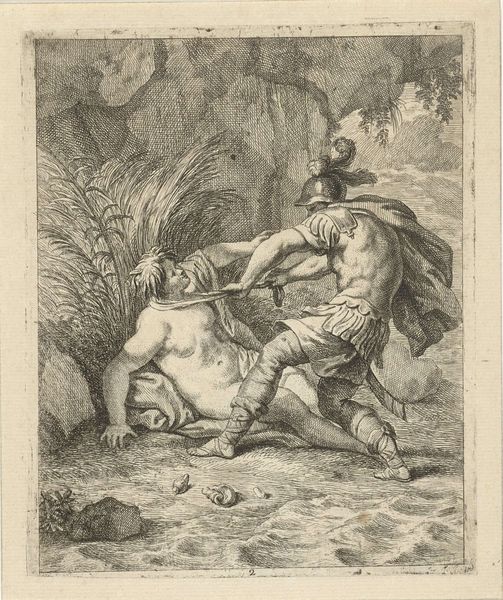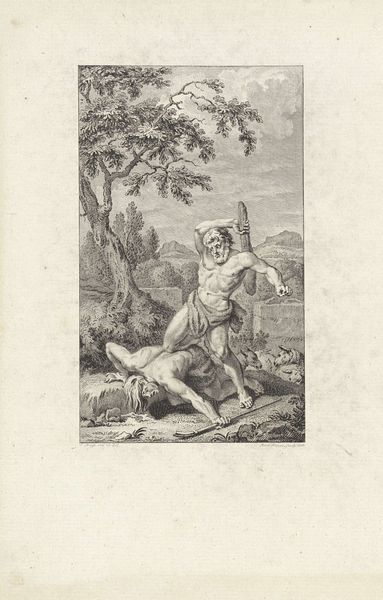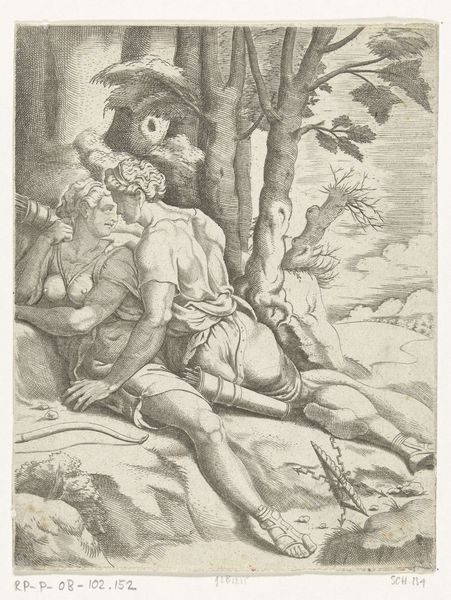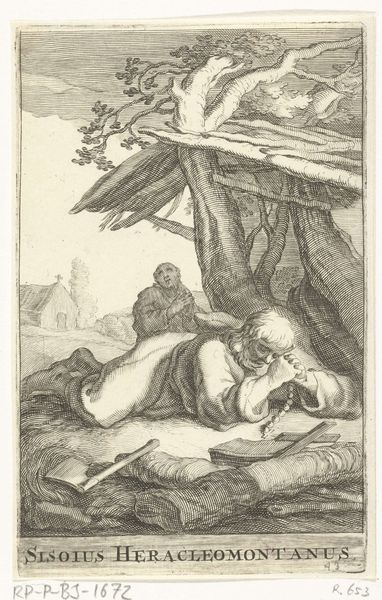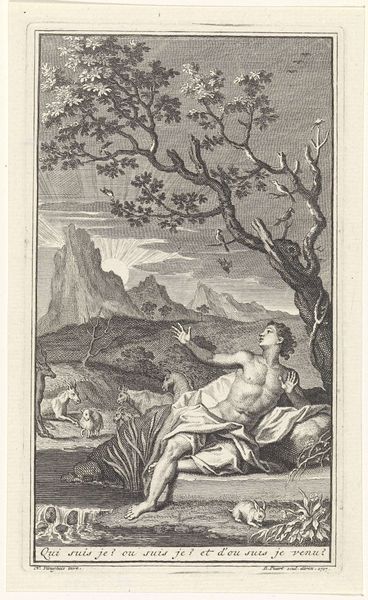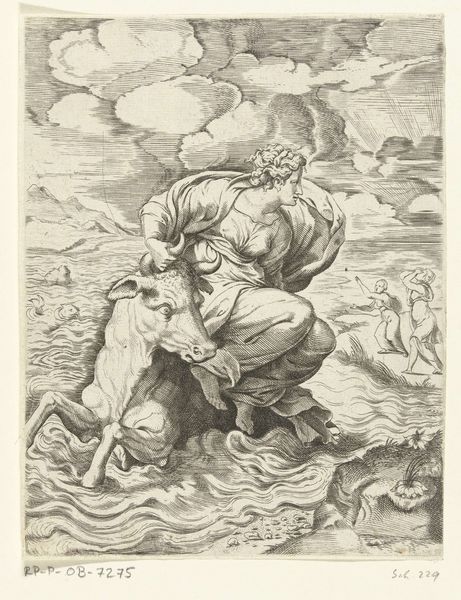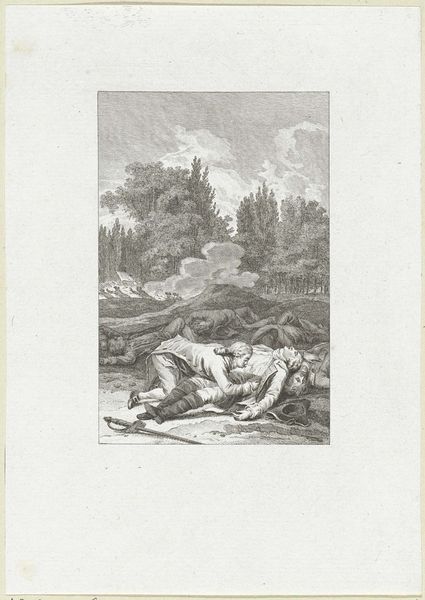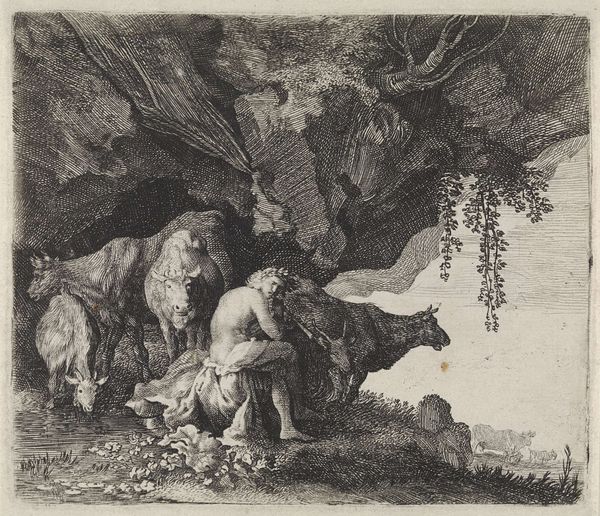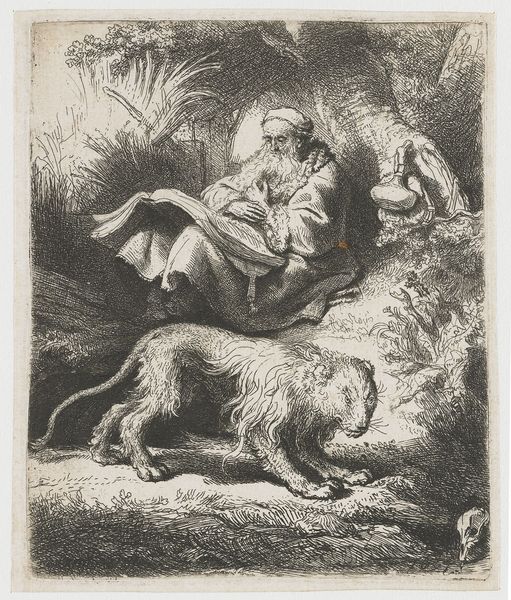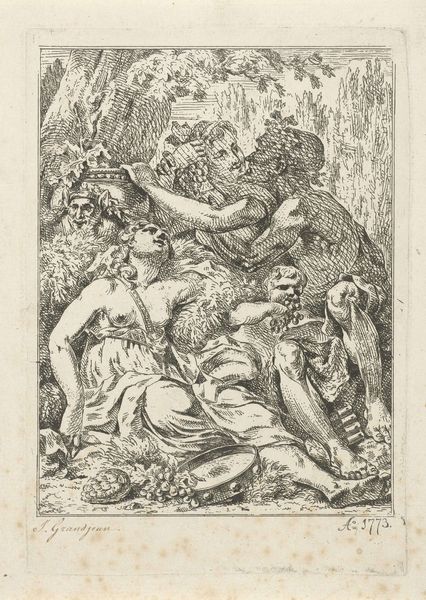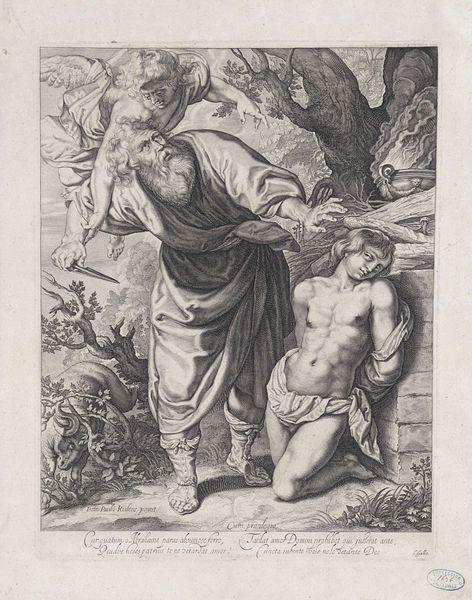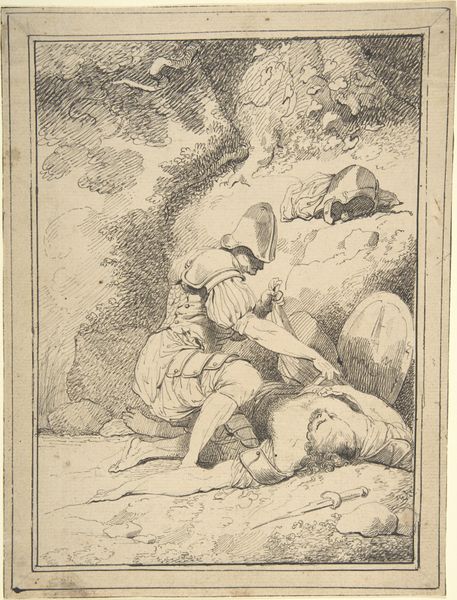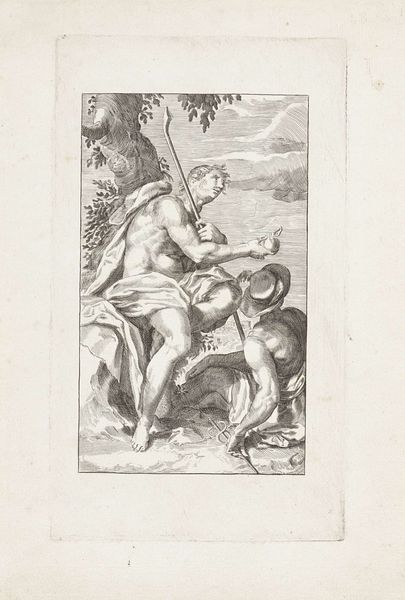
engraving
#
baroque
#
old engraving style
#
landscape
#
figuration
#
history-painting
#
engraving
Dimensions: height 163 mm, width 132 mm
Copyright: Rijks Museum: Open Domain
Editor: So this engraving, "Thetis dipping Achilles in the Styx" by J. Alexander Janssens, dates from around 1700 and depicts the famous Greek myth. What strikes me first is the drama! It feels urgent, with the dark, jagged rocks and the almost panicked gestures of the figures. What story does this capture for you? Curator: Oh, I love that "urgent" captures it for you! For me, it feels as though Janseen almost wants us to see with Thetis: she's driven by a ferocious love, that would compel any mom to grab a torch against whatever may come - and yet, her son's vulnerability in the dark water chills me. He's becoming something Other, invincible... save for that heel, eh? Do you think Janssen sees heroism or a curse in that moment? Editor: Hmm, a curse disguised as heroism, perhaps? That makes me think about the background - it is very foreboding with those shadows, almost consuming. I guess the artist used line engraving to add depth and to hint at something sinister and unseen. Is that a typical of the Baroque style? Curator: Absolutely! Baroque art often employs high contrast, like we see here, not just for drama, but also to delve into the complexities of human experience. Look at the detail etched into the rock face – a raw, untamed world into which Achilles is plunged. Line engraving allows for a sharp level of detail which gives the myth a sense of stark reality - do you get that sense? Editor: Definitely, the rocks seem to be mirroring the action, amplifying the gravity of the event. Curator: It's a wonderful image that lets us meditate about choice: what would any parent sacrifice, or inflict, for their child's future? And at what cost? A lovely thought to mull over for our next coffee! Editor: For sure! It makes you wonder what’s lurking beneath the surface – literally and metaphorically. Thanks so much.
Comments
No comments
Be the first to comment and join the conversation on the ultimate creative platform.
